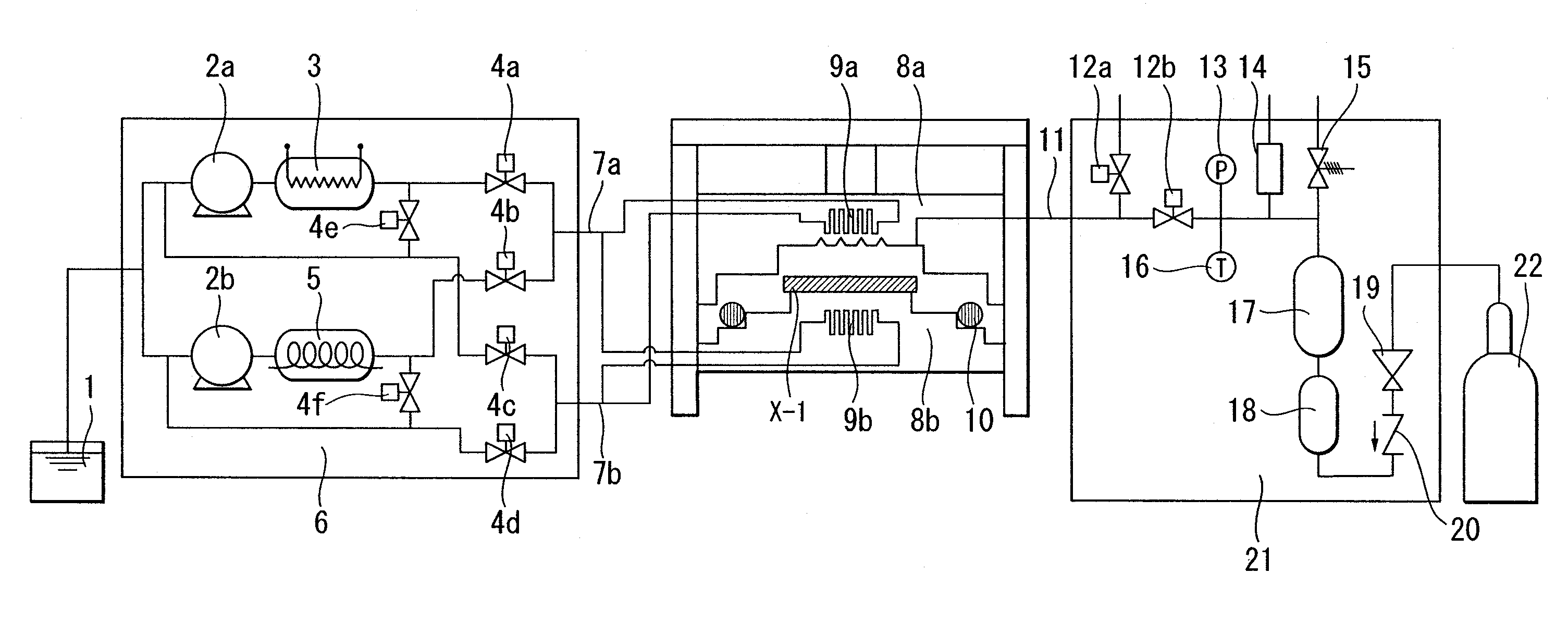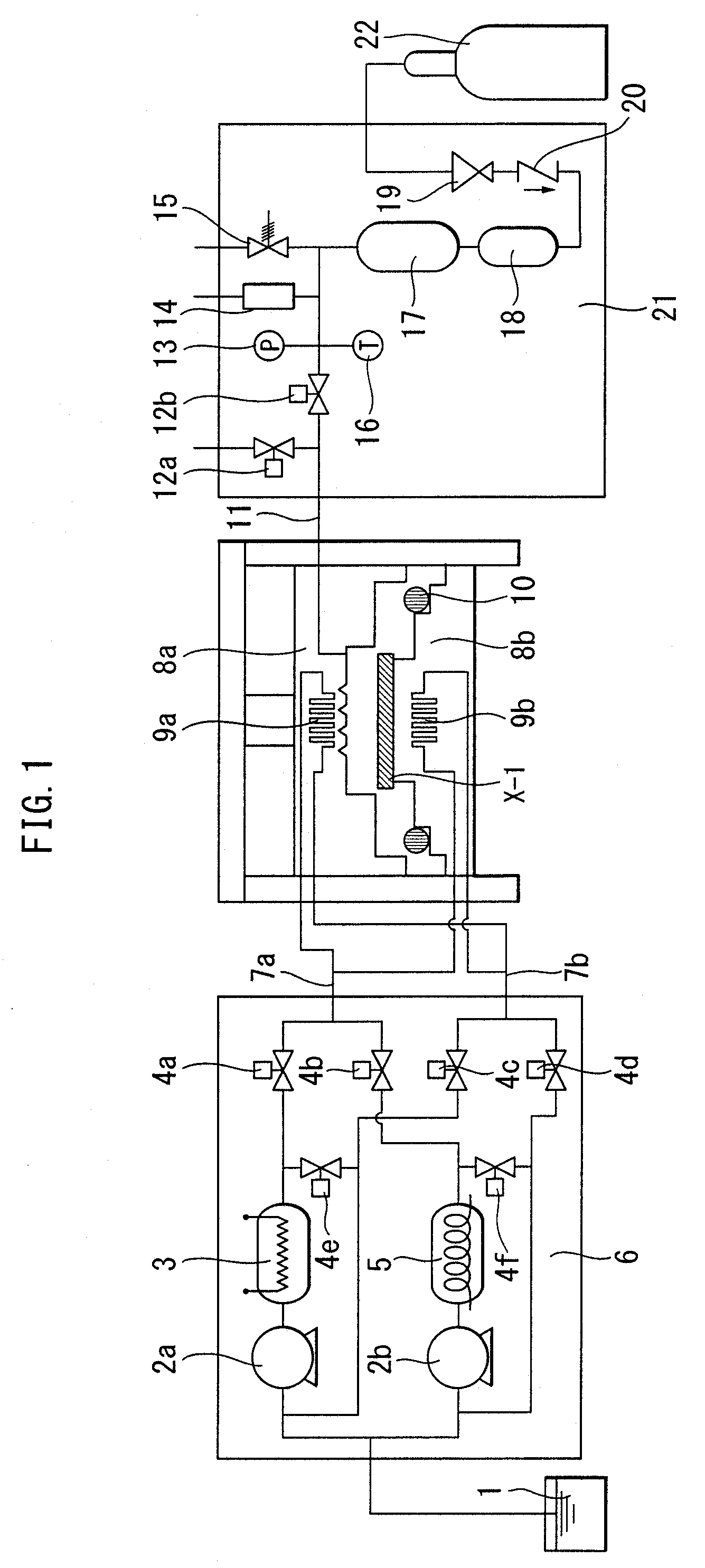Method for molding thermoplastic resin
a thermoplastic resin and thermoplastic resin technology, applied in the field of thermoplastic resin molding methods, can solve the problems of inconvenient cooling, long cycle time, and inconvenient shrinkage ratio during cooling, and achieve the effects of reducing the viscosity of the preform surface, vast improvement of the molding cycle time, and increasing productivity
- Summary
- Abstract
- Description
- Claims
- Application Information
AI Technical Summary
Benefits of technology
Problems solved by technology
Method used
Image
Examples
example 1
[0045]This example corresponds to the first aspect of the present invention, and will be described in detail with reference to the drawings. FIG. 1 shows the whole molding apparatus. In FIG. 2, (a) is a plan view of a preform X-1, and (b) is a cross sectional view taken along the line A-A′. In FIG. 3, (a) is a plan view of a molded product X-2, and (b) is a cross sectional view taken along the line B-B′. In FIG. 4, (a) shows a molding process, and (b) shows hardening temperature of a resin changing according to the molding process and a mold temperature.
[0046]In the drawings, reference numerals 8a and 8b denote an upper half and a lower half, respectively, of a mold for press molding. The insides of the upper and lower halves 8a and 8b are provided with heat exchangers 9a and 9b, respectively, for heating the mold 8a and 8b by circulating hot water. The lower half 8b is provided with a sealing member 10 for guaranteeing airtightness when the mold 8a and 8b are sealed. Temperature of...
example 2
[0050]Molding was performed as in EXAMPLE 1 except that the charging pressure of carbon dioxide was 15 MPa. Conditions for molding are shown in Table 1, and evaluation of the molded product is shown in Table 2.
example 3
[0051]Molding was performed as in EXAMPLE 1 except that the temperature of carbon dioxide was 60° C. Conditions for molding are shown in Table 1, and evaluation of the molded product is shown in Table 2.
PUM
| Property | Measurement | Unit |
|---|---|---|
| temperature | aaaaa | aaaaa |
| thickness | aaaaa | aaaaa |
| width | aaaaa | aaaaa |
Abstract
Description
Claims
Application Information
 Login to View More
Login to View More - R&D
- Intellectual Property
- Life Sciences
- Materials
- Tech Scout
- Unparalleled Data Quality
- Higher Quality Content
- 60% Fewer Hallucinations
Browse by: Latest US Patents, China's latest patents, Technical Efficacy Thesaurus, Application Domain, Technology Topic, Popular Technical Reports.
© 2025 PatSnap. All rights reserved.Legal|Privacy policy|Modern Slavery Act Transparency Statement|Sitemap|About US| Contact US: help@patsnap.com



